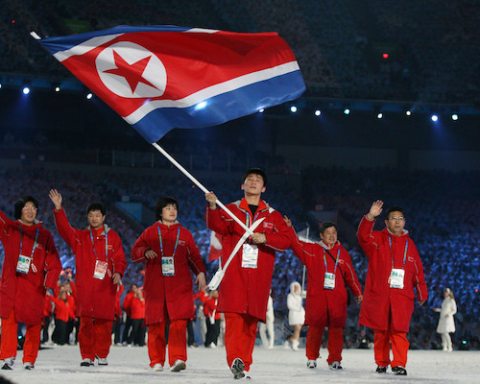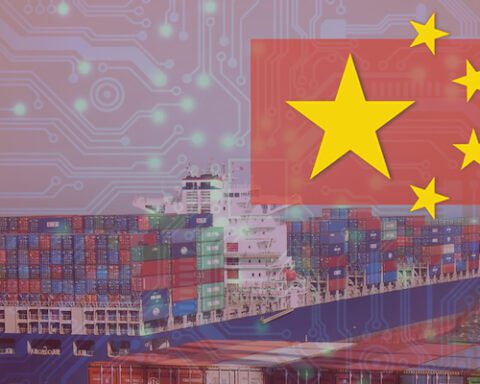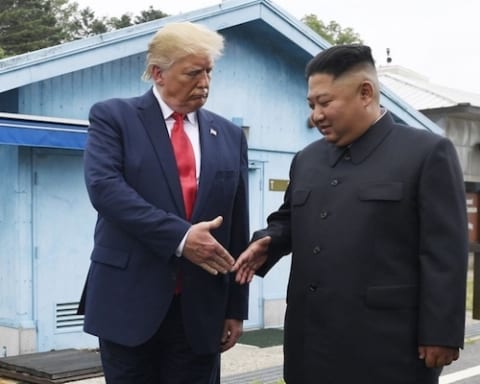Investors may look at the prevalence of South Korean brands, and the success of South Korean companies, and see an appealing investment destination. They should be wary.
It is true that South Korea is an economic miracle, exhibiting stupendous growth over the last few decades. When the two Koreas first split, North Korea had a higher per capita GDP than the South, but today South Korea is 15 times richer.
Recently, however, South Korea’s growth has been sluggish with mediocre equity market returns.
From December 2011 to December 2016, the KOSPI, an index of all stocks traded on the Korean exchange, barely grew – rising only 2.8% total. Not 2.8% per year. Total. Then, a bull run started that saw the KOSPI go up 30% over the next 13 months. Since then, the KOSPI has lost nearly all of its gains and is only 4% above where it was eight years ago.
No investor would be happy with returns like this. These troubles are reflected in South Korea’s GDP, which regularly rose by 5-7% until 2009. Over the last few years, the numbers have been less impressive. Since 2012, the growth rate has hovered between 2.3% and 3.3% per year.
According to the latest Green Book, the report from Korea’s Ministry of Economy and Finance released on January 11th, “[i]nvestment and employment remain weak, and concerns have been rising over a pessimistic outlook for semiconductor manufacturing. External uncertainties linger amid ongoing trade conflicts between the US and China.”
So what happened to the booming South Korean miracle?
To understand what is going wrong, we should start with the basics. South Korea’s economy is dominated by a few large conglomerates called chaebol. Many of these chaebol are well known in the United States because South Korea’s economy is heavily driven by exports and companies like Samsung, LG, and Hyundai, which sell an enormous volume of products overseas. This concentration of business activity in a few firms put the government in a position to direct a great deal of economic activity. It chose to pursue a strategy of encouraging exports to boost growth. While the strategy was highly successful and produced results for a long time, South Korea is now running up against its limits and is having a hard time reorienting the economy to a different model.
The economic data may actually understate the scale of the problem. Trade represents 77% of South Korea’s GDP, one of the highest figures in the world, and one good year by a few chaebol can mask underlying weakness. This is what happened in the last two years. South Korea’s exports fell in 2015 and 2016, the first time this had happened since 1958. In 2017, exports rose again thanks almost entirely to one company – Samsung – having a banner year. Samsung rode the chip market to new heights through most of 2018, but chips are cyclical and the bottom has now fallen out.
In its most recent guidance to investors, Samsung reported a highly negative outlook predicting that slowing growth in China and the end of the semiconductor chip cycle would dampen profits by 18%. Semiconductor chips account for three times as much of South Korea’s exports as cars. Samsung’s chip sales were propping up the data, but now those days are over. South Korea is likely to see overall exports decline in 2019 again.
Because South Korea is so export dependent, it is highly susceptible to the strength of its trading partners. South Korea’s biggest trading partner is now China. South Korea sells twice as much to China as it sells to the United States. And, as everyone now knows, China’s growth is slowing. This slowdown is a big reason Samsung’s chip sales are disappointing. The ongoing Sino-U.S. trade war has not helped matters either.
South Korea’s leaders have promised to transition away from export dependency by building up its domestic consumer market. But, as has been the case for other countries, this transition has proven difficult. It is not made easier by the fact that South Korean household debt, currently at 96%, is double the G20 average. It’s hard for consumers to drive the economy when their incomes are spent paying down credit cards.
![Image [via South Korea Ministry of Economy and Finance JAN. 11, 2019][www.moef.go.kr]](https://limacharlienews.com/wp-content/uploads/2019/01/South-Korea-Ministry-of-Economy-and-Finance-JAN-11-2019.jpg)
An aging society burdened by debt, where young people struggle to find disposable income, does not seem fertile ground for a transition to a consumer driven economy. These trends have been visible for some time, but now they are impossible to ignore. The government is not oblivious to these challenges, but that doesn’t mean it knows how to solve them. South Korea has begun bringing in more immigrant workers to address its aging population, but it isn’t taking in enough to make up for the shortfall. The government has also provided subsidies to women who have more children, but apparently not enough to significantly change behavior.
President Moon Jae-In has tried to implement economic reforms to boost consumer spending. He raised the minimum wage in an effort to raise real incomes for people with a high propensity to spend and is proposing further increases. This has met with resistance from the business community, which blames Moon’s policies for the weak economy when circumstances are at fault. Moon is also proposing changing the rules to allow more competition with the chaebol. This may boost growth in the long term, but in the short term there may be dislocation. There is a very real risk the political system will abandon needed reforms because tough economic conditions make it appear that the reforms are failing.
Investing in emerging markets can be attractive to investors because of the promise of rapid growth and high returns. But investors need to be aware that with these potential rewards come great risks. South Korea is no longer an emerging market. It is a mature economy that faces serious structural challenges and has not demonstrated it can overcome them. Investors would be advised to tread carefully.
John Ford, for Lima Charlie News
John Ford is an attorney in California and a reserve officer in the US Army. He writes about global strategy and international economics, focusing on the Asia Pacific. You can follow him on twitter at @johndouglasford.
For up-to-date news, please follow Lima Charlie on twitter at @LimaCharlieNews
In case you missed it:

![Image What’s ailing South Korea? [Lima Charlie News]](https://limacharlienews.com/wp-content/uploads/2019/01/What’s-ailing-South-Korea-Lima-Charlie-News.png)



![Image South Korea struggles to increase low fertility rates. Could refugees help? [Lima Charlie News] (AP Photo/WFP, Ho)](https://limacharlienews.com/wp-content/uploads/2018/07/South-Korea-struggles-to-increase-low-fertility-rates.-Could-refugees-help-480x384.jpg)




![Blossoming Russo-Turkish alliance leaves U.S., NATO behind [Lima Charlie News]](https://limacharlienews.com/wp-content/uploads/2019/07/Russia-Turkey-alliance-leaves-U.S.-NATO-behind-480x384.png)


![Image South Korea struggles to increase low fertility rates. Could refugees help? [Lima Charlie News] (AP Photo/WFP, Ho)](https://limacharlienews.com/wp-content/uploads/2018/07/South-Korea-struggles-to-increase-low-fertility-rates.-Could-refugees-help-150x100.jpg)
